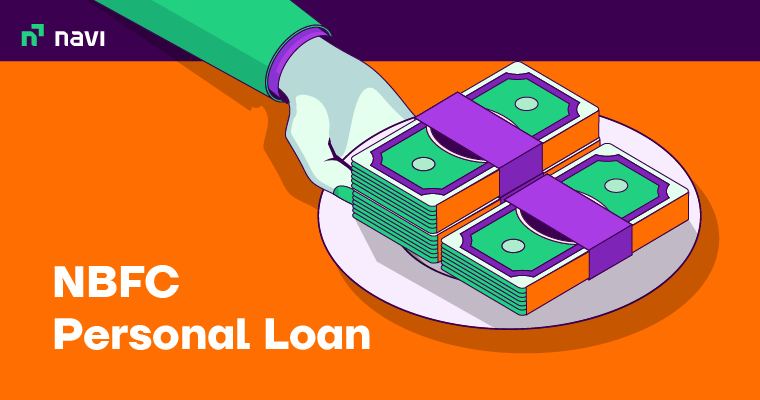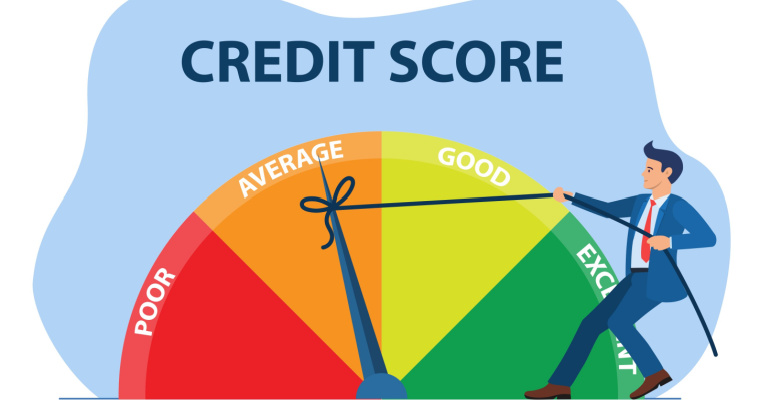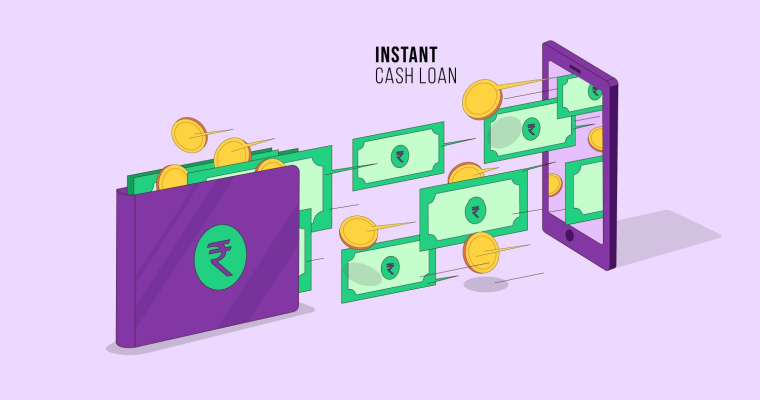What is Loan Syndication – Its Process, Types, Benefits and Example

When a borrower needs a considerable amount as a loan (loans that run to triple-digit crores or more), it may not be as easy to avail of credit. This is because it may be beyond a lender’s risk tolerance or resource capacity to furnish the entire sum alone. This is where loan syndication can help. Under this process, when a borrower approaches a lender with such a request, the lender brings in other lenders on board to fulfil their client’s requirement. It allows better and heterogenous loan terms and efficient loan management.
Read on to know how loan syndication works, examples, types and benefits.
What is Loan Syndication?
Loan syndication is the process of multiple lenders coming together to fund a large loan requirement of a single borrower. This process is required when the loan amount is so large that a single lender cannot extend it for two reasons. First, it does not have enough resources, and second, the risk associated with extending such an amount is too high.
Thus, multiple lending institutions come together – or syndicate – and collectively extend the loan to the borrower. In most cases, the borrowers are big companies or businesses looking to fund large projects.
How Does Loan Syndication Work?
The loan syndication process can be divided into three stages. Here is the list:
- Pre-mandate Stage
The borrower initiates the first stage. In this stage, the borrower contacts a single lender or invites competitor bids from multiple lenders. The borrower needs to mandate a strategy to get the required debt as per the lead bank. After the lead bank is chosen, the appraisal process starts. The lead bank will look after the needs of the borrower and will design a loan structure for the borrower. A credit proposal will also be developed.
- Loan Syndication
This stage involves the lender placing the loan and disbursement. The lead bank will prepare a term sheet, an information memorandum, and legal documentation in order to sell the loan at the marketplace
- Post-Closure Stage
This stage involves monitoring through an escrow account. An escrow account is an account in which the borrower deposits revenue. It is the agent’s responsibility to prioritise the loan repayment. The agent also needs to ensure that the payment is made before making payments to any other parties. It is the duty of the agent to manage the running and operating of the loan facility on a regular basis.
Example of Loan Syndication
Assume that Company X operates in the automobile industry and is introducing a new range of cars, which requires a loan of Rs. 1000 crore. It approaches its bank, say HDFC in this case, requesting the funds. HDFC approves the loan but informs Company X that it is beyond its risk appetite to disburse such a large sum. They decide to syndicate the loan and prepare all the necessary documents for it.
On reaching out to other lenders, several other banks – Canara, ICICI, Bank of India, and IDBI – agree to give out the loan collectively. With HDFC as the lead bank, the loan structure is prepared, and each bank agrees to supply 20% of the total loan requirement. This reduces the risk exposure for each lender, and Company X gets its required sum.
The critical thing to note here is that there is only a single contract between the lenders and the borrower. This means that Company X does not have separate agreements with every bank, but only the lead bank. The duty of HDFC as the lead bank is to monitor the escrow account until the amount is repaid in full.
Types of Loan Syndication
There are three types of loan syndication:
1. Underwritten Deal
In an underwritten deal, the lead bank, or the arranger, guarantees the entire loan amount. This effectively means that the arranger is under the obligation to take over any amount that other lenders do not subscribe to. It may later try to reach out to other investors if the conditions related to the loan improve.
This form of loan syndication is quite common and is taken up by lead banks for two primary reasons – it makes the lender an attractive candidate for giving the mandate to, and the lender also gets a lucrative payment for taking on the guarantee.
2. Club Deal
In this case, a club of lenders is formed by the borrower or the lead bank on the indication of the borrower. Every club member extends an equal amount that adds to the total loan and gets an equivalent portion of the fee.
3. Best-efforts Syndication
In a best-efforts syndicate, the lead bank operates as usual but does not guarantee the loan amount to the borrower. It finds other banks to participate in extending the loan and takes advantage of the market conditions to bring a lender on board. However, despite its best efforts, there may be a situation where the loan remains undersubscribed. In this case, the borrower may be forced to take up the lower amount or cancel the loan itself.
Also Read
Advantages of Loan Syndication
Here’s a list of benefits of loan syndication:
- It facilitates the borrowing of a large amount by companies and businesses to fund big projects.
- It reduces the effort of the borrower to arrange a large sum of money.
- Since multiple lenders are involved, the borrower can benefit from the heterogeneity of loan terms. It allows the borrower to enjoy varying interest rates and different loan structures.
- Since there are bids by many lenders, the lead bank helps the borrower avail of competitive interest rates. This also boosts the borrower’s reputation since many lenders are seen as willing to extend a loan to them.
- The lead bank oversaw the loan process execution and completion, allowing for better and more efficient management.
Disadvantages of Loan Syndication
The limitations of loan syndication are:
- The process of bringing multiple lenders on board is a time-consuming process, which may delay the project for which funding is required.
- It may be challenging to satisfy every lender’s terms and conditions.
- If the borrower encounters any financial difficulty, it can be challenging to honour the requirements of all lenders at once.
Parties Involved in Loan Syndication
The parties involved in loan syndication may vary from one deal to another, but usually, it includes the following participants as mentioned below:
1. Lead Bank (Arranging Bank)
- This bank is mandated by the borrower responsible for arranging funds as per the specific terms that the loan parties decide
- They are bound to acquire other lending parties willing to participate in this loan syndicate as well as share the lending risks involved
- This bank is responsible for discussing the terms of the agreement and preparing loan documentation with the participating banks
- Terms negotiated between the lead bank and borrower are documented in the term sheet. The term sheet includes details like loan amount, repayment schedule, loan tenure, interest rate, and any other fees related to the loan
- The lead bank holds a vast portion of the loan and is responsible for the distribution of cash flow among participating lenders
2. Underwriting Bank
- The lead bank will underwrite the portion that is unsubscribed from the required loan
- Or a different bank may provide the fund for the loan
- This underwriting bank will then bear the risk that will likely occur
3. Participating Bank
- All the banks that participate in the loan syndication are known by the name of participating banks
- The participating banks will charge a fee
4. Agent Bank
- The agent bank in a syndicated loan serves as the mediator between borrower and lender, as there is a contractual obligation for both the parties
- It is the responsibility of the agent bank to look after the proper operation of loan syndication
- There are some additional responsibilities in the agency agreement in some cases
- A primary responsibility of the agent bank is to channel the loan amount from the participating banks to the borrower and to channel back the principal as well as the interest from the borrower to the participating banks.
Final Word
Loan syndication is a helpful process for borrowers looking for considerable funding. When the borrower approaches a preferred bank making it the lead bank, it brings multiple lenders together to gather the amount. This process allows easy execution and seamless management of the loan, providing the borrower with the desired funds, and minimizing risk at the bankers’ end.
FAQs
Ans: A loan syndication agent is a bank or other financial institution the borrower first approaches for the loan. It is also known as the lead bank. This agent plays a vital role in the syndication process and in bringing other lenders on board.
Ans: There are three stages in the loan syndication process. First is the pre-mandate stage. This is followed by the loan placement and disbursement stage, and finally, the post-closure stage.
Ans: There are three main participants in loan syndication. First is the borrower, who applies for the loan. Second is the lead bank, also known as the arranger. Third are the participating banks, who agree to extend a portion of the syndicated loan.
Ans: When there is an underwritten deal, the lead bank guarantees to absorb any amount that remains unsubscribed by the participating banks. This way, the borrower is assured that they will get the required amount. Banks underwrite the syndicate to get an edge over other lenders the borrower may approach for loan syndication.
Ans: Loan syndication can be a time-consuming process. The lead bank must reach out to many potential lenders and bring them on board. It may be challenging to satisfy the terms of every lender, making it tough to prepare the final loan structure.
Personal Loan in Your City

Customer’s Feedback
No comments found.Axis Bank Personal Loan Interest Rates April 2023
Axis Bank Personal Loan interest rates are currently starting at 10.49% p.a. for loans of ₹25,000... Read More »No Credit Check Loans in India
What is No Credit Check Loan? A ‘no credit check loan’, as the name suggests, does not... Read More »Instant Cash Loan in 1 Hour Without Documents
Instant Cash Loan in 1 Hour Are you in any emergency cash crisis and in need of an instant cash ... Read More »Personal Loan on PAN Card – Check Your Eligibility & Apply Now!
Do you need urgent cash to pay for an unexpected expense, a pending bill, or a medical emergency? A... Read More »What are Short Term Loans? – Key Features and Benefits
Short Term Loan A short term loan provides urgent assistance for an individual’s financial req... Read More »Interest Rate on NBFC Personal Loan
NBFC Personal Loan Non-Banking Financial Companies (NBFCs) are becoming increasingly popul... Read More »How to Apply for a Pre Approved Personal Loan?
Pre Approved Personal Loan Pre-approved loans are instant personal loans that are offered by ban... Read More »Personal Loan Disbursal Process
A personal loan is an unsecured loan which you can avail to deal with any type of financial emergen... Read More »Unsecured Loan – Types, Benefits, Interest Rate & Eligibility
What is an Unsecured Loan? An unsecured loan is a type of loan that doesn't require any collater... Read More »Small Cash Loan on Aadhaar Card without PAN Card
Small cash loans are type of personal loans offered by banks and NBFCs to meet short-term financial... Read More »Personal Loan for Low CIBIL Score Applicants – Eligibility Criteria and How to Apply
Overview - Personal Loan With Low CIBIL Score Be it for a medical emergency, a sudden business o... Read More »What is a Fast Loan – Features, Interest Rates and How to Apply Online?
What is a Fast Loan? A fast loan is an instant personal loan that allows you to borrow money wit... Read More »Top 10 Chit Fund Schemes in India in 2023
Chit funds are one of the most popular return-generating saving schemes in India. It is a financial... Read More »10 Best Gold ETFs in India to Invest in April 2023
Gold ETFs or Gold Exchange Traded Funds are passively managed funds that track the price of physica... Read More »10 Best Demat Accounts in India for Beginners in 2023
Creation of Demat accounts revolutionised the way trades were conducted at the stock exchanges. It... Read More »20 Best Index Funds to Invest in India in April 2023
What is an Index Fund? An index fund is a type of mutual fund or exchange-traded fund (ETF) that... Read More »Best Arbitrage Mutual Funds to Invest in India in April 2023
Arbitrage funds are hybrid mutual fund schemes that aim to make low-risk profits by buying and sell... Read More »10 Best SIP Plans in India to Invest in April 2023
What is SIP? SIP or Systematic Investment Plan is a method of investing a fixed amount in ... Read More »10 Best Corporate Bond Funds in India to Invest in April 2023
Corporate bond funds are debt funds that invest at least 80% of the investment corpus in companies ... Read More »10 Best Bank for Savings Account in India [Highest Interest Rate 2023]
Savings account is a type of financial instrument offered by several banks. It lets you safely depo... Read More »






















